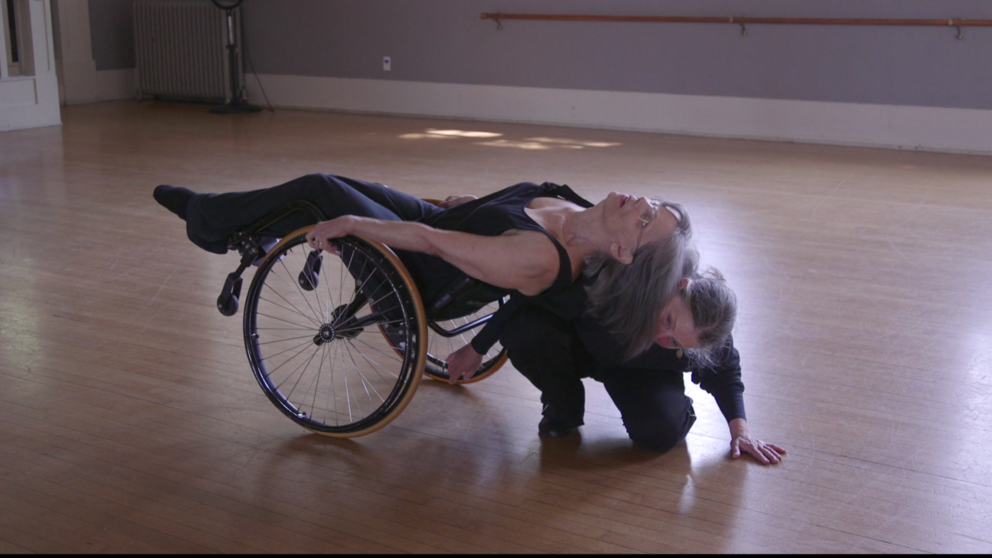Curtiss became paraplegic after a gymnastics accident when she was 17. After an inspiring encounter with Brazilian musicians during a visit abroad, she soon began dancing with the front end of her wheelchair off the ground. Curtiss then formed Light Motion Dance in 1988, inviting Petroff to join the company in 1990.
Their dance piece, set to a wash of music by Enya, is an elegant and graceful partnering accentuated by a mesmerizing motion of wheels and the push and pull of both partners — motion that isn’t possible with two able-bodied dancers. The wheelchair, in fact, expands the dancers’ movement vocabulary.
“Stand ups who don’t have experience in an integrated setting are very nervous about dancing with someone in a wheelchair because they’re afraid they’re going to get run over — and so you have to desensitize that fear,” Curtiss explains.
“I know pretty much what Char’s turning rate is,” responds Petroff. “Usually when I get run over it’s usually my fault.”


